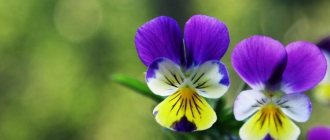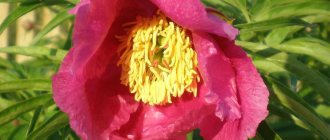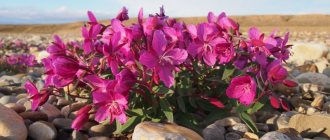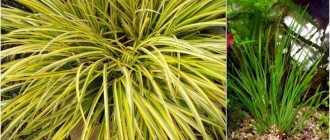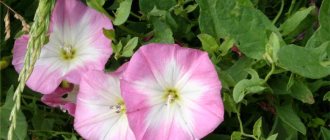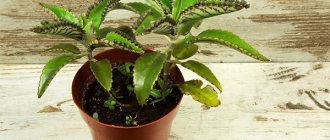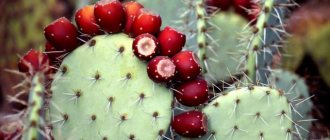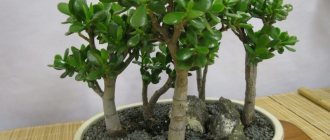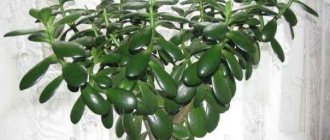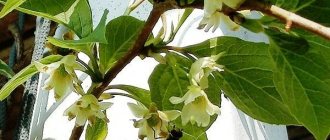Description of Caucasian rhododendron
Caucasian rhododendron is an evergreen plant of the Ericaceae family of the Rhododendron genus. Found naturally in the Lesser and Greater Caucasus. Forms extensive thickets next to snow-covered fields. It lives at altitudes from 1600 to 3000 above sea level.
It has been cultivated since the beginning of the 19th century. Well adapted to the conditions of the middle zone. It is planted on the territory of European Russia, including in the North-Western region. Many species of Caucasian rhododendron are listed in the Red Book.
A shrub with a usual height of 50 - 60 cm sometimes reaches 1 - 2 m. The branches are recumbent, with dark bark. The leaves are oval-shaped, oblong, leathery, pointed at the ends. The leaf blade is dark green on top and covered with short red hairs on the bottom. Leaves length is up to 10 cm.
The flowers are funnel-shaped and resemble bells, up to 4 cm in size, color - from whitish to pink, with a light, pleasant aroma. The flowers are collected in umbrella-shaped inflorescences. There are greenish spots inside. Pedicels and calyxes are covered with red hairs. After flowering, a box up to 3 cm long is formed.
Caucasian rhododendron in the photo:
What it looks like and where it grows
The literal translation of the word "rhododendron" means "rose tree". And it looks no worse than a rose. Caucasian rhododendron is a member of the heather family. Where it grows is clear from the name: its homeland and place of growth is the Caucasus. This is an endemic of the Caucasus, that is, the plant is so specific that in nature it lives in a rather limited area, representing a bright characteristic part of the flora of this natural-geographical zone. It is a typical representative of the mountain-meadow subalpine landscape.
Rhododendron is an evergreen plant and not very tall (up to 1–1.5 m). Its stem is recumbent, that is, it grows parallel to the surface of the soil, and is covered with dark brown, almost brown bark. The leaves are oval, slightly elongated along the longitudinal axis. The leaves are rough-leathery to the touch, although not thick. They are shiny and smooth, green above, gray-red below and densely covered, like soft felt, with short hairs.
The flowers are not large in size, not exceeding 3 cm in diameter. They are arranged in umbrella-shaped inflorescences, in which from 9 to 10 corollas are collected. Their color can be either snow-white (these can be found mainly on the slopes of the Western Caucasus), or pale cream or light pink (their place of growth is Mount Gamzachiman in Northern Armenia, the Trialeti Range and the Elbrus region, Mount Cheget). But it is true that rhododendron with yellow flowers is also found much less frequently.
Rhododendron begins to bloom at the end of May. Flowering continues for about a month. When the flowers fade, oval-oblong shaped seed pods appear in their place, the color resembling the lower part of the leaves - gray-rusty, and the same felt like the bottom of the leaf.
Due to their surface structure, rhododendron roots strengthen the soil layer well on mountain slopes.
Rhododendron has good winter hardiness and can withstand frost down to -29 degrees in natural conditions, which is why summer residents in central Russia began to grow it.
In nature, colonies of Caucasian rhododendron are common in the foothills and mountains of the Greater and Lesser Caucasus, spreading along the Caucasian ridges to Turkey. Its main settlements are located at an altitude of 1600–3000 m. In Russia, the usual places of growth are Dagestan, Karachay-Cherkessia, North Ossetia, Ingushetia, Chechnya, Kabardino-Balkaria, Adygea and Krasnodar Territory. It is also found in Altai, but these mountain ranges are not native to the plant: rhododendron was brought there.
And in Abkhazia there are even large plantations of rhododendron: thanks to the plant’s ability to heal people, medicines are made from its leaves and flowers.
Video:
varieties and types of rhododendron Expand
Collection and storage
Leaves and flowers of rhododendron are suitable for medicinal purposes. Leaves can be collected during all three summer months, but the best period is during flowering, at the same time as flowers. The most valuable medicinal raw materials will be obtained from plants aged 2–3 years, because by this time they have accumulated enough substances that have a medicinal effect.
They pick leaves and flowers into a basket with their hands, then lay them out to dry in a thin layer on clean paper or cloth in a warm and well-ventilated place, but not in the sun, since bright sunlight destroys the useful components contained in them and changes the color of the raw materials. From time to time, the leaves and flowers are stirred so that they dry more evenly.
When the raw material is completely dry, it should break when slightly squeezed. It is placed in glass containers and covered with a lid so that the raw material does not absorb moisture from the surrounding air. This medicine should be stored for no more than 2 years in a dark room and at a temperature not exceeding 50 degrees.
Varieties of Caucasian rhododendron
Depending on the color of the flowers, there are several varieties of rhododendron:
- Cunninghams White. The variety was bred at the end of the 19th century. This is a winter-hardy and unpretentious plant up to 2 m high. The crown diameter is up to 1.5 m. The culture is not demanding on soil acidity and does not suffer from urban pollution. The flowers are white, with lilac specks on the upper petal. Flowering occurs in early June;
- Riga white. The plant is up to 70 cm high. In spring it produces snow-white flowers, which is how the variety got its name. Grows in parks and the botanical garden of Riga;
- Straw yellow. Shrub up to 1.5 m high and up to 3 m wide. Found in mountainous areas. The flowers are bell-shaped with a diameter of 4 - 6 cm. The flowers are yellow in color, collected in inflorescences of 8 - 12 pieces;
- Rosea Alba. A decorative form characterized by early flowering. Produces beautiful pinkish-white flowers.
Beneficial features
Folk recipes in the preparation of life-giving potions use 4 types of rhododendrons: Caucasian, Daurian, golden, Sagan-daylya (Adams).
Varieties are endowed with healing properties:
- bring down the temperature;
- relieve pain;
- calm down;
- are an antiseptic;
- diaphoretic.
Rhododendron successfully affects the activity of the heart muscle, drives away unnecessary fluid, removing swelling, and eliminates suffocation. Normalizes heart rate, reduces blood pressure and cholesterol.
Leaves are used to treat:
- rheumatism;
- colitis;
- cold;
- epilepsy.
Normalization of metabolic processes in the body
Medicines based on Adams rhododendron are used in the treatment of metabolic disorders. No wonder this species is called the grass that prolongs life. Buryats have long used medicinal plants in the treatment of ailments and for prevention purposes. Tincture of leaves and tea with flowers will help restore impaired metabolism.
Immunity
Thanks to a large amount of vitamin C, rhododendron is able to restore and strengthen the immune system. Tincture, decoction or tea strengthen the body's resistance to disease.
Effect on the gastrointestinal tract
An infusion is made from the leaves of the Daurian rhododendron, which is used to treat gastrointestinal poisoning and inflamed mucous membranes.
Brew 1 tsp in a glass of boiling water. dry leaves. Drink 1 tsp. at least four times a day. Folk medicines that disinfect the body from harmful bacteria, dysentery pathogens, E. coli, and other pathogenic microbes will also help restore the intestinal microflora.
The body's resistance to pain, stress and climate change
The plant has a strong analgesic effect. Using medicinal herbs, you can reduce pain during menstrual periods in women. At this time, women are especially nervous. An infusion of Adams rhododendron leaves will calm the nerves and return the body to a state of balance. During menopause, rhododendron tincture will relieve hot flashes.
Headache
Tea with Caucasian rhododendron inflorescences has a tonic effect and relieves headaches. A tincture of golden rhododendron will help reduce high fever. Pour 200 ml boiling water 1 tsp. dry leaves, leave for half an hour. Drink 2 tsp. at least three times a day.
Pressure stabilization
An infusion of a medicinal plant will help bring high blood pressure back to normal. 20 g of dried leaves are brewed in a glass of boiling water and left for half an hour. Drink 1 tbsp before meals. l. (three times a day).
Calming effect
An infusion of Rhododendron Adams leaves has amazing calming properties. Its regular use will restore disturbed sleep, calm the nerves, and help cope with stress. It is not for nothing that in Tibet the medicinal herb is used as a tonic. Buryats, where rhododendron has already been included in the Red Book, also take the plant as a tonic.
Effect on the heart
Golden rhododendron tincture will help normalize heart function and regulate blood flow. Dry crushed raw materials (1/5 part) are poured into a clean jar. Top up with vodka. They last for half a month. Treat 15 drops with water.
Choking and tachycardia are treated in the same way.
Anti hangover
Adams herb tincture relieves the liver and blood of toxic substances and toxins, and alleviates the condition of chemical and food poisoning. People drink it when they have a hangover, since the herb reduces alcohol intoxication.
Medicinal properties of Caucasian rhododendron
The leaves of Caucasian rhododendron have healing properties. They contain acids, essential oils, tannins, rhododendrin, vitamin C, and tannins. The roots of the plant contain substances that burn fat.
Attention! The leaves of the plant also contain andromedtoxin. In high concentrations, this substance is poisonous and causes poisoning.
Treatment with Caucasian rhododendron is carried out under the supervision of a doctor. The specialist will conduct an examination and prescribe the required dose. At high concentrations, intake leads to intoxication and worsens health.
The effect of Caucasian rhododendron on the body is as follows:
- increases sweating, removes toxins and other harmful substances;
- normalizes body temperature, relieves fever during colds;
- removes cholesterol from the blood;
- calms the nervous system;
- burns fat and helps you lose weight;
- diuretic effect helps relieve swelling;
- prevents the growth of harmful bacteria;
- increases blood flow and contraction of the heart muscle;
- reduces venous pressure;
- benefits for rheumatism, colitis, epilepsy.
Effective remedies against poisoning by mercury and other toxic substances are obtained from Caucasian varieties. The drugs relieve headaches and restore mucous membranes. Aqueous extracts are used to rinse for diseases of the oral cavity.
An infusion of leaves is used for infertility and uterine erosion in women. The medicinal properties of Caucasian rhododendron for men are to relieve inflammation in the prostate gland.
Is rhododendron honey good for you?
There are many legends about honey collected from rhododendron. They say that you can even be poisoned by it - up to the appearance of delusions and hallucinations. The ancient Greek commander and writer Xenophon described an incident that occurred during one of his campaigns, when the army stopped for the night in a place famous for its excellent beekeepers and their honey. The warriors could not restrain themselves and pounced on the honey - they ate as much as everyone could. But soon one after another became ill, and one by one they all lost consciousness. They began to come to their senses only the next day, but were still in a twilight state. And only by the end of the fourth day absolutely everyone - alive and well - was able to continue their hike. It turned out that the bees collected the honey that drove the whole army out of the saddle from the rhododendrons that grew lushly around.
In the Batumi valley, not far from the place described by Xenophon, similar honey was discovered again, but later - in 1877.
Today it has been established that bees collect such extravagant honey from the flowers of yellow rhododendron, since it contains an increased percentage of andromedotoxin. It can provoke unpleasant symptoms; a person who has eaten enough of it is not immune from headaches, vomiting, and darkening of the eyes.
But at the beginning of the last century, Russian botanist Robert Regel established that, in fact, honey is not poisonous at all and is completely suitable for consumption. It tastes a little unusual, because it is not very sweet and slightly tart, and it has a special color - beige. Some indigenous Caucasian peoples living in the mountains heat honey to 46 degrees, while toxic substances disintegrate, but the taste and beneficial properties remain unchanged.
Rhododendron honey is good for treating colds, easing coughs due to bronchitis, and easing the course of acute respiratory infectious diseases. Having chosen honey for treatment, you should not get carried away with its excessive consumption. The maximum dose is 2 tablespoons per day. Otherwise, both allergic reactions and problems with the nervous system are possible.
We recommend reading:
benefits of linden honey
Read
Methods for harvesting Caucasian rhododendron
In order for plants to bring maximum benefit to the body, it is important to properly prepare the raw materials. Leaves are cut during the flowering period from bushes older than 2 years. To do this, use sharp scissors or pruning shears. For work, choose the morning or evening period.
The collected leaves are dried outdoors or indoors. Be sure to choose a place in the shade, protected from direct sunlight. The collected raw materials are laid out on paper or clean cloth. The leaves are kept until completely dry. The mass is stirred periodically.
When the raw material becomes more brittle and brittle, it is removed for storage. Dried leaves are kept at room temperature, protected from sunlight and high humidity. It is best to place the mixture in a container and close the lid. The storage period is up to 2 years.
Chemical composition
The plant has a unique natural composition: andromedtoxin, tannins, essential oils, vitamin C.
When does hydrangea bloom - flowering period, how long does it bloom
Andromedtoxin is a special physiologically active substance that has a calming effect, but if doses are exceeded, it can have a toxic effect.
Note! It is largely because of this that the use of rhododendron-based drugs requires strict adherence to dosage regimens and doctors’ recommendations.
How to brew Caucasian rhododendron
Caucasian rhododendron tea relieves sore throat due to colds. The drink strengthens the immune system, calms the nervous system, and relieves insomnia. It is also used for gargling.
The procedure for preparing tea from Caucasian rhododendron:
- Pour boiling water over the teapot.
- Place 1 tbsp on the bottom. l. dried leaves.
- Add 1 cup of boiling water.
- Close the teapot with a lid and leave for 15 minutes.
- Strain the infusion.
Prepared tea is taken daily, 1/3 cup. Add lemon, honey or sugar to taste. The plant goes well with other herbs: oregano, thyme, mint, sweet clover, lungwort, sage, fireweed. The course of taking this tea is 2 - 4 weeks, after which they take a break for 2 weeks.
Economic importance and application
A plant that grows on mountain slopes and clings to their surface prevents rocks from falling.
All parts of the plant are actively used in pharmacology. Modern methods of collecting rhododendron honey have made it safe. It has a beige tint, tastes tart and less sweet, and is useful in the fight against colds and infections.
Healing properties
Medicinal qualities are inherent in all parts of the plant: stems, leaves, flowers and even roots. They are used to treat many diseases of the joints, heart, and kidneys. They have bactericidal, antipyretic, diaphoretic, sedative, and analgesic properties. Eliminate inflammation of the prostate gland in men.
Thanks to its ability to remove excess moisture from the body, rhododendron helps reduce shortness of breath, normalize heartbeat, and eliminate swelling. The leaves help relieve asthma and chronic bronchitis by having a soothing effect on the lungs. Flowers are used to make tea infusions that relieve sore throats and headaches.
Important! Preparations containing rhododendron have a bactericidal effect against streptococcal and staphylococcal infections.
Medicines with rhododendron
Use in folk medicine
Traditional folk medicine recommends the use of teas, infusions and decoctions of rhododendron leaves. According to the recipes, they are effective in the treatment of fevers, epilepsy, insomnia, and nervousness. They are used to get rid of rheumatism, gout, dysentery, and colitis.
Contraindications and harm
The poisons contained in the composition can have harmful effects and are dangerous for the following categories of people:
- pregnant and lactating women;
- allergy sufferers;
- patients with tissue necrosis.
When self-medicating and violating the recommended dosages, salivation and sweating increase, dizziness, nausea, vomiting, and weakness appear. As you continue to take the drug based on rhododendron, your blood pressure decreases and convulsions appear.
Note! Severe poisoning is characterized by loss of coordination, heart rhythm disturbances, and muscle weakness.
Preparation of medicinal raw materials
Most often, leaves are used that are harvested during flowering, when the concentration of substances in them is highest. Raw materials are collected only from young plants for 2-3 years. The raw materials are dried in a well-ventilated area, spread out in one layer and covered from direct sun, or in the oven at 50-60 °C. Store in a closed glass container, in a dark and cool place, for no more than two years.
Preparation of rhododendron leaves
Application of Caucasian rhododendron
In order for Caucasian rhododendron to have a therapeutic effect, it is important to choose the right method of application. Most often, a decoction or alcohol tincture is prepared from the plant.
A decoction of the leaves normalizes the nervous system and alleviates symptoms of diseases of bones and connective tissue. The course of treatment is at least a month.
Procedure for preparing the decoction:
- 5 g of dried leaves pour 1 liter of water.
- Bring the liquid to a boil for 5 - 8 minutes.
- Remove the container from the stove and leave the broth to steep for 30 minutes.
The product is taken three times a day, 50 ml. The broth is stored in the refrigerator. It is best to prepare fresh product at least once a week.
Another way to use Caucasian rhododendron is as a tincture. Prepare it yourself or purchase a ready-made product at the pharmacy. The course of treatment is from one to two months, after which they take a break for a month. The drug lowers blood pressure and normalizes sleep.
Attention! Taking the tincture should not exceed the dosage: the norm is no more than 25 drops per day.
Instructions for preparing the tincture:
- Measure out 20 g of dry leaves and pour 200 ml of vodka into them.
- The mass is mixed well and kept in a place protected from sunlight.
- After 2 weeks, the product is filtered.
- The resulting tincture is stored in a cool, dark place.
When it blooms in the mountains
The shrub begins to bloom in June, and blooms for about two months. In August, small seeds in capsules ripen. Because these very beautiful flowers grow high in the mountains, they are difficult to collect. Perhaps this is why rhododendron is valued both as an ornamental plant and as a medicinal plant.
Did you know? There is a legend that beautiful fragrant flowers were given to rhododendron by elves, whom this plant sheltered for the night when they lost their home.
Planting and caring for Caucasian rhododendron
Mountain Caucasian rhododendron develops well in the conditions of the middle zone. The plant prefers shady areas with moist soil. The shrub does not freeze at temperatures down to -29 °C. The optimal substrate is leaf soil, peat and coniferous litter in a ratio of 3:2:1.
Rhododendron is planted in the spring. It is better to prepare the planting hole in the fall so that the soil shrinks. The plant is removed at least 70 cm from other shrubs and trees.
Planting procedure:
- A hole 70 cm wide and 50 cm deep is dug in the area.
- Sand and broken bricks are placed at the bottom in a layer of 20 cm.
- The hole is filled with substrate to form a small mound.
- A seedling is placed on top. Its roots are covered with soil.
- Rhododendron is watered abundantly.
- A mulching layer up to 8 cm thick is poured into the tree trunk circle.
In the future, the rhododendron is provided with good care: watering, fertilizing, weeding. The plant requires abundant watering. Water is applied at the root at least 2-3 times a week. The moisture requirement per plant is up to 10 liters.
Attention! The first sign of a lack of moisture in rhododendron is drooping leaves and the appearance of dark spots on them.
Rhododendron is fertilized 2 - 3 times per season. In spring, rotted manure is applied under the bushes. Before and after flowering, use any fertilizer containing phosphorus and potassium. Compounds containing lime and chlorine should be avoided.
For the winter, young Caucasian rhododendron plants are covered with spruce branches. Just also agrofibre and other non-woven materials. They are mounted on a wooden frame. Winter watering and mulching the soil with humus protect well from frost. At the end of March, the shelter is removed, but the spruce branches are left. This will help prevent sunburn on the leaves.
Diseases and pests
Branched rhododendron bushes with their lush blooms attract many insects that can destroy the plant. Experts recommend preventing the appearance of pests.
- Slugs, snails and other shellfish are collected by hand, then the bush is treated with thiram.
- Bugs, spider mites, and rhododendron flies are destroyed by karbofos.
It is important to treat not only the branches and leaves themselves, but also a small area around the plant to protect it from the reappearance of pests.
Rhododendrons are susceptible to fungal diseases. The reasons are insufficient soil aeration and improper watering regime. How to cope with illnesses:
- rotten shoots are completely removed;
- rust can be treated with iron chelate;
- Bordeaux mixture is used as a preventative measure. Treatment is carried out in early spring or late autumn.
By growing Caucasian rhododendron in your summer cottage, you can get not only a beautiful, but also a useful plant. Proper use of dried leaves and buds of the bush will help you quickly cope with many diseases.
How to plant Caucasian rhododendron in a flowerbed
Caucasian rhododendron prefers damp, dark places. The plant is used in group and single plantings. Select areas with moist soil. An excellent option is planting next to ponds and streams, under ornamental shrubs, spruce, pine and other trees. The plant will help fill the northern side of the site next to the walls of houses and fences.
Rhododendrons planted in groups look impressive. They are located along lawns, paths and alleys. When planting, take into account color compatibility. It is best to combine varieties with white, pink and purple inflorescences.
Rhododendrons produce beautiful solitaire compositions. The tall shrub stands out against the green lawn. The plant is also used to create rocky hills and hedges. Its combination with other alpine herbs is very impressive.
Growing and propagating plants
To grow a mountain species of rhododendron at home, it is necessary to create the conditions familiar to it. Perhaps this is in a garden or summer cottage. Rhododendron in the mountains grows in a windless, shaded space, free from large trees. The northern side of the site is suitable. The rules for planting mountain rhododendron do not differ from the rules for other varieties.
Note! It is important to monitor soil moisture, as heavy rains, the effects of snow melting or high groundwater rise will negatively affect the bushes.
Caucasian rhododendron propagates in the same way as other species: by seeds, cuttings or layering. The fastest and easiest way to start a new plant is cuttings.
Possible harm
When using a rhododendron drink, it is very important to adhere to the recommendations for use, due to the content of andromedotoxin, which can harm the body if overdosed.
What are the dangers of an overdose of andromedotoxin?
- insomnia;
- hallucinations;
- hyperactivity;
- diarrhea;
- urinary retention;
- kidney dysfunction;
- tachycardia.
Also, rhododendron tea and tincture are contraindicated in the following cases:
- allergy;
- pregnancy;
- kidney disease;
- childhood;
- individual intolerance;
- tissue necrosis;
- lactation period;
- increased excitability;
- adolescence;
- chronic diseases.
Side effects from using the drink:
- allergy;
- dehydration;
- addiction;
- dry mouth.
Important! Be sure to consult your doctor before use.
Relevant products in the Online store:
Redken
COLOR EXTEND MAGNETICS Professional shampoo for stabilizing and maintaining the color saturation of colored hair
from 2,079 rub.
John Frieda
Brilliant Brunette Color Protecting Moisturizing shampoo to protect dark hair color
from 900 rub.
L'Oreal Paris
Elseve Expert Color Hair Balm
from 370 rub.
Redken
COLOR EXTEND MAGNETICS Professional mask for stabilizing and maintaining the color saturation of dyed hair
from 3,267 rub.
All goods
